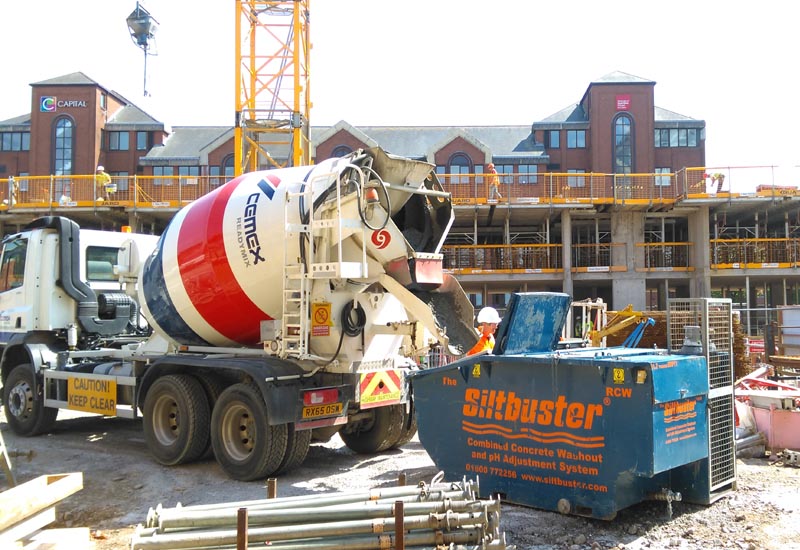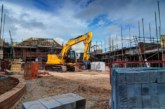
With new sentencing guidelines now taking effect, it is time for housebuilders to review how they manage pollution on site, as Dr Richard Coulton, CEO of Siltbuster explains.
It used to be that the magnitude of the fine imposed for pollution incidents was purely dependent on the damage caused and did not consider the degree of corporate negligence or a company’s size. As a result, similar sized fines (often less than £10k to £20k) would be imposed by the courts irrespective of a construction company’s ability to pay. This led to a temptation for less environmentally aware organisations to take a risk with the disposal of dirty water and other forms of pollution. It was not uncommon for some to take the view that adopting best environmental practice was expensive and therefore it was ‘worth taking the risk’ of discharging dirty water untreated.
In July 2014, all this changed when the Sentencing Council set out a new, clear sentencing rationale. This takes into account culpability, harm and the size of the responsible firm to determine the magnitude of the fine imposed on companies which pollute the environment.
Under the new guidelines neither the law nor maximum fine has changed (£3,000,000), but the size of the fine now not only depends on the damage caused but also the degree of corporate negligence and the size of the company.
Harder sentences
Although this change appears subtle and was brought in two years ago, it is now being felt within the house building sector in terms of the sentences being metred out. For example, following a recent pollution incident a small local sub-contractor was fined £10,000 whilst the much larger main housebuilder, found jointly responsible for the same incident, was fined £100,000.
The implications of the change do not stop there. With the magnitude of the imposed fine also now determined by the degree of culpability, housebuilders now need to foster a culture of pollution prevention not only on all their sites but also corporately. For example, without adopting such a culture the occurrence of repeat incidences even on different sites could be considered a deliberate act of negligence leading to a further escalation of the magnitude of the fine.
With potential fines significantly greater than the cost of pollution prevention the financial incentive ‘to take the risk’ has been removed. As a result most housebuilders are now starting to now taking pollution prevention more seriously.
Sources of on-site pollution
So how big is the risk of pollution on site? For housebuilders, the risk is significant. The simple act of stripping a site of topsoil can, unless carefully planned and coordinated, led to a pollution event when it rains. In addition many other day-to-day building activities have the potential to create pollution as most sites use a variety of potentially polluting chemicals (such as, paint, solvents, fuel and cement). If these substances get into waterways they can be devastating – killing off aquatic life.
Although these are commonplace situations, it is only now that housebuilders are now becoming fully aware of the risk a pollution incident poses to both their reputation and financial bottom line.
How to respond
Having recognised the many instances where problems can arise, there are some key steps housebuilders should adopt to minimise the risk of breaching environmental legislation and the potentially hefty fines that could now follow.
Foster a culture of zero harm that embraces not only health and safety in the workplace but also the surrounding environment.
- Introduce a programme to educate site personnel on the environmental risks posed by construction activities. For example most construction workers are aware of the risks of silt and oil pollution, yet are more than happy to allow concrete wagons to wash out in leaky waste skips, even though high pH concrete wash water on a volume by volume basis has the potential to cause much greater harm.
- Plan the works in a manner which minimises the environmental risks. For example only strip the minimum area necessary for the works in hand, install measures to prevent silt pollution, refuel vehicles in designated areas where adequate spill prevention can be provided and wash concrete truck mixers out in a unit designed to treat the high pH water.
- Ensure the RAMS (risk assessments and method statements) cover the environmental risks associated with each construction activity and that operatives are briefed on that risk and how to manage it.
- Put in place appropriate measures to manage any residual environmental risk. Such as segregate waste by different types, install settlement units to remove silt contamination from water pumped off construction sites, provide oil spill kits and only wash out concrete trucks into a system designed to neutralise the high pH water. These measures need not be expensive and typically can be hired in on a weekly basis.
- Plan for the unexpected, it rains a lot in the UK, even in the summer. So make sure your environmental protection measures can cope with a sudden down pour or mid-summer thunderstorm.
- Know where to get specialist help and equipment to management the residual risk imposed by construction activities and make sure that this equipment is installed and operational before commencing work.
Lastly, housebuilders and property developers need to ensure that sufficient money is included in budgets to cover the cost of environmental protection measures, as ultimately under the sentencing regime this is likely to be much less expensive and less damaging than the alternative of being fined.








